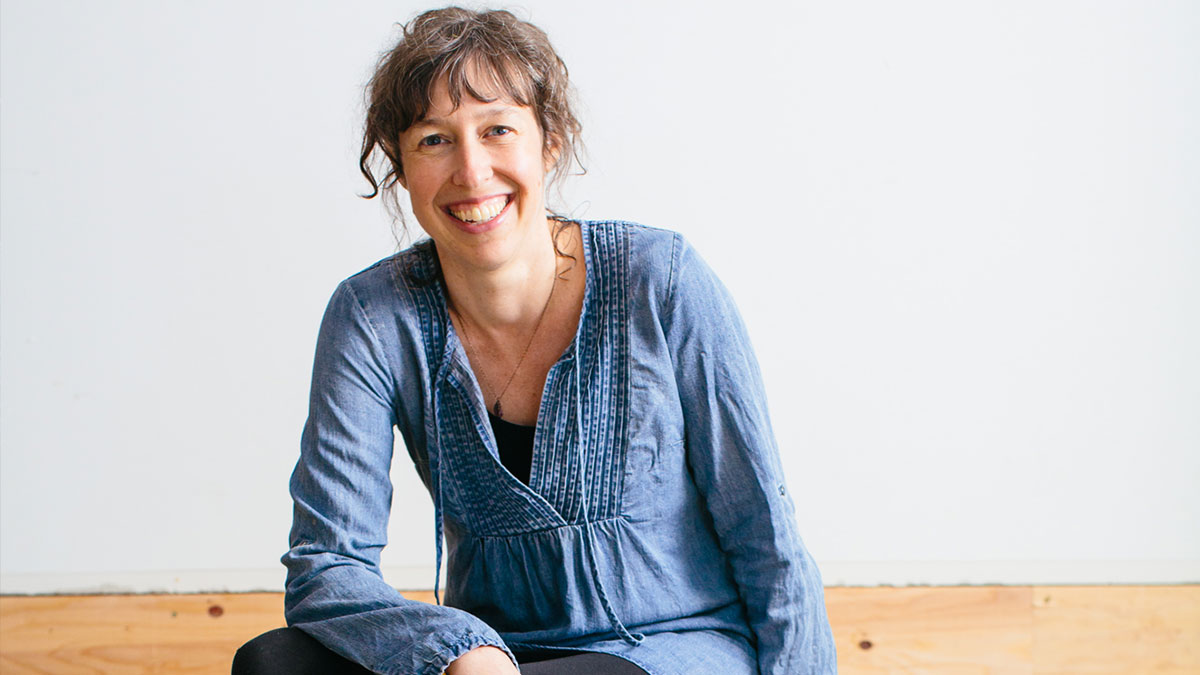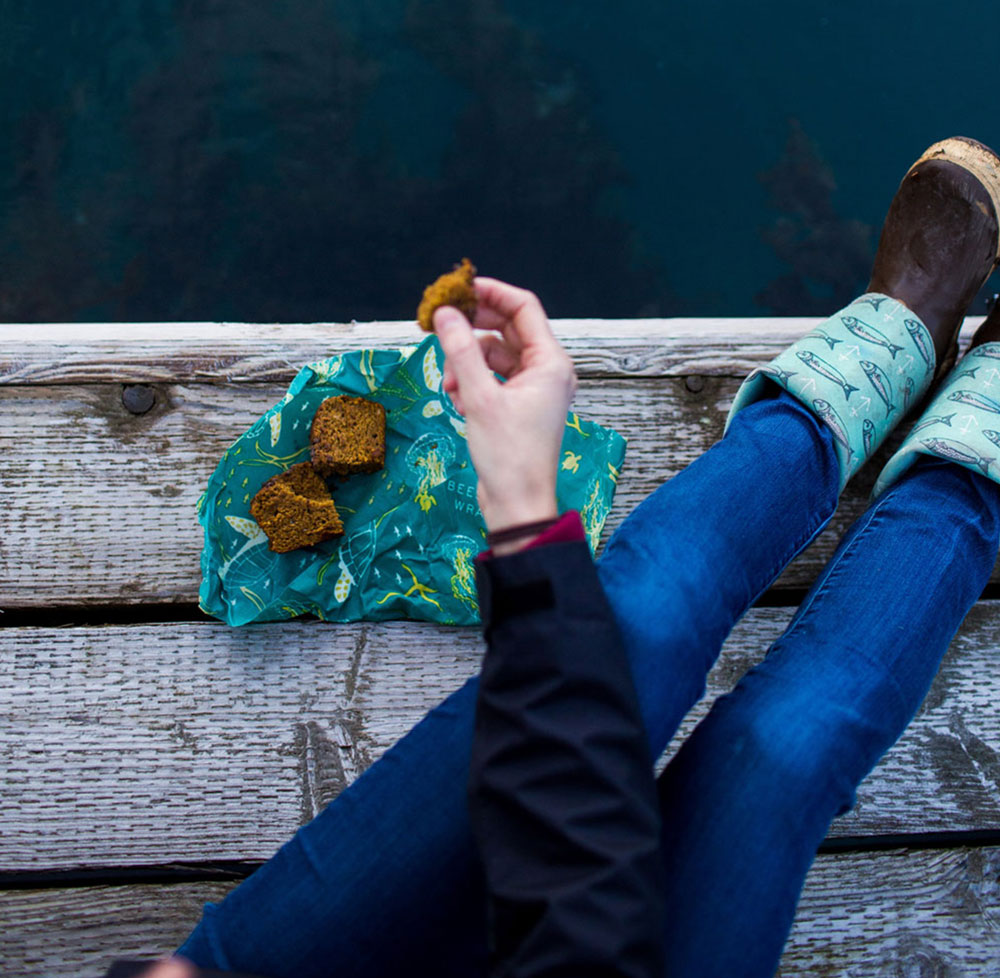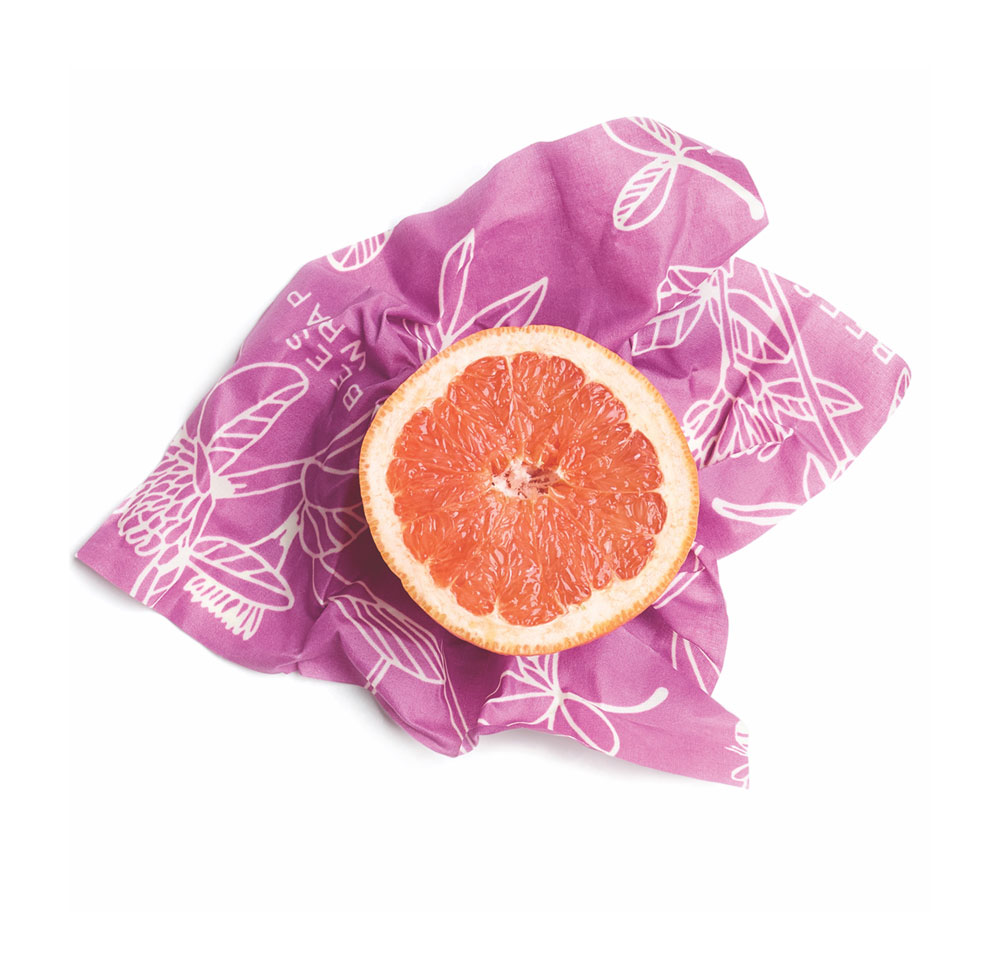Free the Ocean Interviews
Sarah Kaeck spent the early days of Bee’s Wrap hand painting wax onto every wrap – for months the comforting scent of beeswax filled their home. Today, Bee’s Wrap is handmade by their growing team in Middlebury, Vermont. Since 2012, they’ve created wraps that provide a versatile and durable solution for sustainable food storage.
Our team at Free the Ocean loves this plastic-free product, which is why I was so happy to interview the inspiring Sarah Kaeck!
You founded Bee’s Wrap in 2012 from Vermont. What was your initial inspiration?
Bee’s Wrap grew out of a need in my own family to store our food in a sustainable way. My family and I were making and growing a lot of our own food at our home in Vermont — baking bread and making yogurt. I was struggling to come up with a good way to store bread in particular that would keep my loaves fresh. I came across the idea of waxing fabric with beeswax, resin, and jojoba oil, and began experimenting at home until I’d found a formula that worked for us. I wanted to create something that made it easier for my family, and others, to reduce waste and cut down on single-use plastics.
In the beginning it was just me, but I quickly brought on some friends and neighbors. One friend was a farmer who had extra time in the winter. Another was the mother of one of my children’s friends. Bee’s Wrap was growing by word-of-mouth at that point, and by the end of the first year, there were eight of us making the wraps — most of us mothers, working around our kids’ schedules.
The ingredients of Bee’s Wrap are all-natural, and organic — adding up to a washable, reusable, and compostable alternative to plastic wrap! How did you first figure out the ‘recipe’?
The first step was getting our formula right — experimenting with ratios and different variations until I found the one that was right for me. But the next big step was sourcing. Since the beginning, it’s been very important to me that Bee’s Wrap is sourcing our ingredients responsibly and sustainably.
Help us visualize a typical day at Bee’s Wrap headquarters, walk us through the process of making a wrap:
We handle everything in house — from sourcing our materials to producing the wraps to marketing and distribution. So, depending on the day, there’s always a lot going on! Our production space smells of beeswax, a scent we all love. In the early days we were painting wax onto each wrap by hand. Now our production facility is located in Middlebury, Vermont. We’ve developed custom machinery that allows us to wax whole rolls of fabric at a time, a change that allowed us to scale the business. Today, Bee’s Wrap is distributed throughout the United States and internationally to more than 30 countries.
How do you make sure the beeswax you’re sourcing fits the company’s sustainability criteria?
When I started the business, I knew I needed to learn a lot about responsible beekeeping, and I was lucky enough to find some wonderful mentors in our local beekeeping community who taught me about their craft and best practices. As Bee’s Wrap grew, we put together an extensive sourcing guide, and have a long list of questions we ask beekeepers prior to sourcing wax. Our beekeepers look at things like forage quality, feeding and harvesting practices, environmental impact, and human intervention of natural bee cycles. Our wax is not bleached or chemically altered and is tested by the USDA for over 200 pesticides and herbicides.
You have 3 kids. Do they influence your decisions and passions? If so, how?
My kids are always questioning the world around them, they hold nothing back because they have no reason to. Our conversations around the kitchen table at dinner time are where a lot of this digging into the why’s of the world happens. These conversations inspire me to question how business is traditionally done, what can we do differently to have a better outcome for our people and the planet.
What are other ways people can live consciously? Other choices we can make in our day-to-day lives that make the world a more sustainable place?
There are so many ways that we can all be doing our part in our day-to-day lives to make a meaningful difference. Thinking about what we consume, where we spend our dollars, what we eat and the farmers we support, how we travel, the resources we consume in our homes and cars — that is crucial. That said, I think change needs to come from both individuals and from corporations and government. It’s important for each of us to take responsibility for the ways our choices and our purchasing dollars affect our communities and our planet. But real and lasting change will come with businesses, industry, and government embrace and ethic that values people and planet as highly as profit.
Vermont is a beautiful place. How does the natural world inspire you? Why do you think nature is important?
This is built into the DNA of our company: Every single print we’ve designed at Bee’s Wrap is inspired by the natural world, and often tells the story of an ecosystem that we love and want to protect. Personally, I’ve spent a lot of my life hiking and camping and being outdoors; it’s something I’ve always loved and treasured. Whether it’s a camping trip or just a walk in the fields near my house, it’s time that’s restorative and nurtures me and my family.
Never stop asking that question, “Is this the best way we can be doing this?”
Your story is very inspirational for aspiring entrepreneurs. Do you have any advice you’d like to share with those who’re just starting their business journey?
Never stop asking that question, “Is this the best way we can be doing this?” I also can’t overstate the importance of building a good team. When I started the business, we were waxing wraps by hand — and I knew that in order to scale, we needed to design a machine to wax fabric faster and in larger quantities. From finding the engineer to help us design that machine, to partnering with a friend who helps me bring each textile design to life, one of my strengths has been finding the right people to help solve problems.





